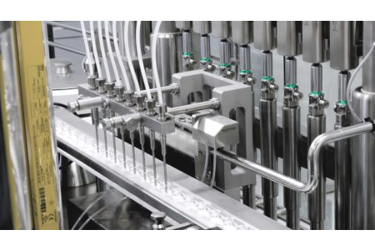Unlocking Pharmaceutical Fill/Finish Manufacturing With An Innovative Glass Packaging Solution
By Matthew Hall, Christian Lavarreda, Laura Moody, Ph.D., Mark Schwartzbauer, and April Shen

There are many factors that limit the speed and efficiency of pharmaceutical filling machines, including the type of glass vial being processed. Traditionally, filling machines have been deliberately engineered with output constraints due to the physical interactions between the machine and conventional borosilicate glass vials. Stress and friction generation on turn tables, tracks and trays, particularly at junctions between intermittent and continuous motion, lead to glass breakage and human line interventions, which risks greater contamination of sterile environments.
Decades of experience with borosilicate glass have allowed design engineers to develop machines that can fill vials at ultra-high speeds of up to 750 per minute with certain contingencies. New vial technology is now allowing filling machine engineers to explore new frontiers without the constraints mentioned above.
Get unlimited access to:
Enter your credentials below to log in. Not yet a member of Pharmaceutical Online? Subscribe today.
